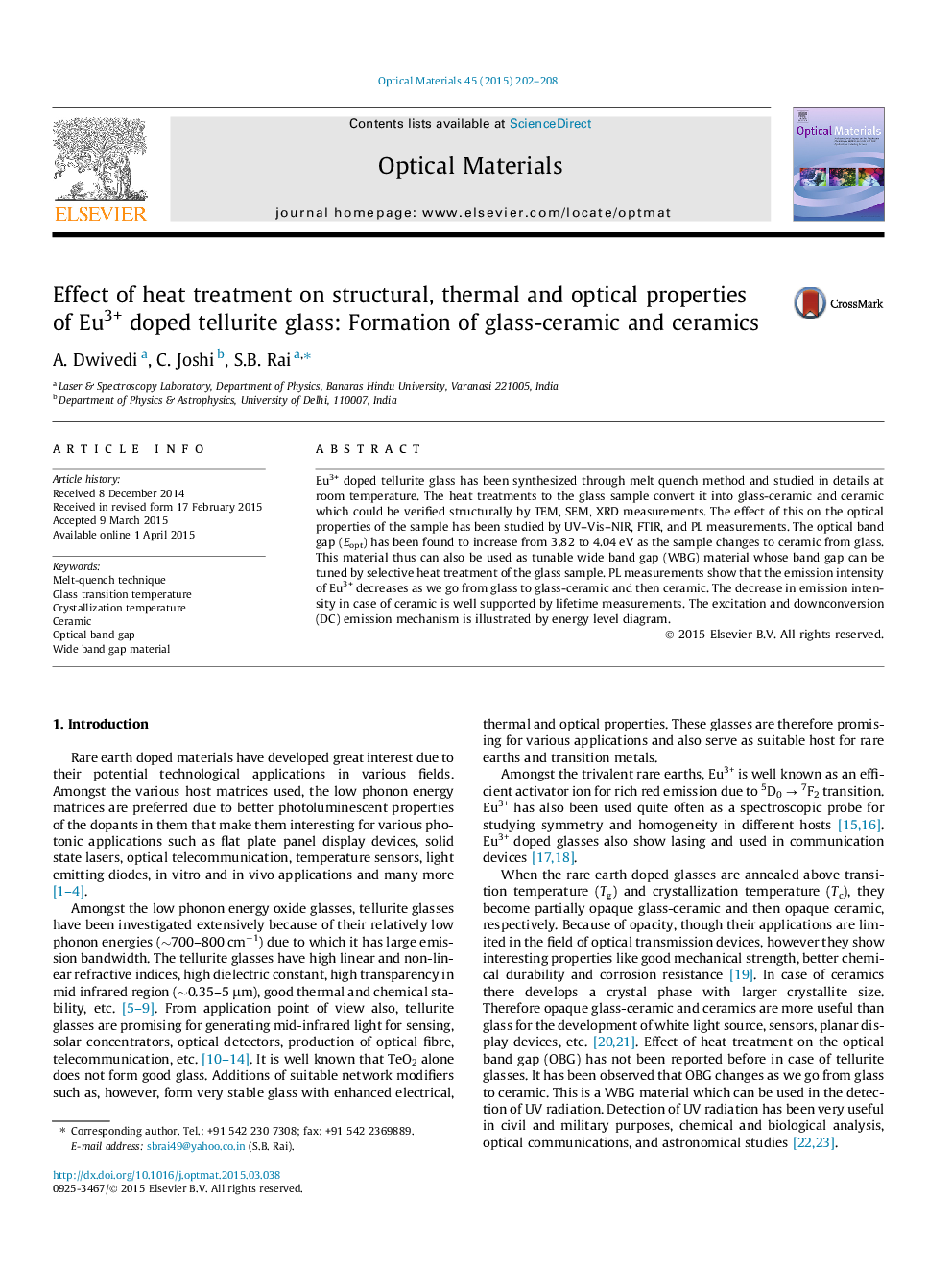| Article ID | Journal | Published Year | Pages | File Type |
|---|---|---|---|---|
| 1493844 | Optical Materials | 2015 | 7 Pages |
•Synthesis of glass-ceramic and ceramic by further heating of the Eu3+ doped glass sample at higher temperature.•Increase in the optical band gap as one proceeds from glass to ceramic.•Role of Eu3+ ion as a probe for site symmetry.•Shifting of CIE color coordinates from red to white light emission with the transformation of glass to glass-ceramic and ceramic.
Eu3+ doped tellurite glass has been synthesized through melt quench method and studied in details at room temperature. The heat treatments to the glass sample convert it into glass-ceramic and ceramic which could be verified structurally by TEM, SEM, XRD measurements. The effect of this on the optical properties of the sample has been studied by UV–Vis–NIR, FTIR, and PL measurements. The optical band gap (Eopt) has been found to increase from 3.82 to 4.04 eV as the sample changes to ceramic from glass. This material thus can also be used as tunable wide band gap (WBG) material whose band gap can be tuned by selective heat treatment of the glass sample. PL measurements show that the emission intensity of Eu3+ decreases as we go from glass to glass-ceramic and then ceramic. The decrease in emission intensity in case of ceramic is well supported by lifetime measurements. The excitation and downconversion (DC) emission mechanism is illustrated by energy level diagram.
Graphical abstractFigure optionsDownload full-size imageDownload high-quality image (69 K)Download as PowerPoint slide
